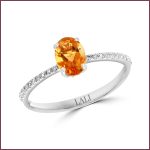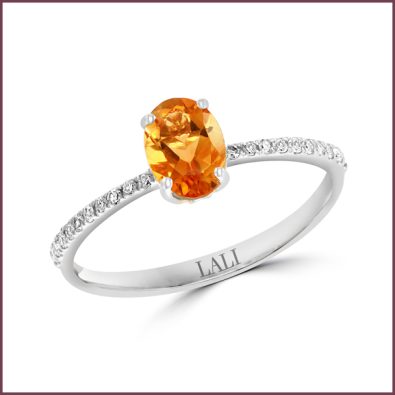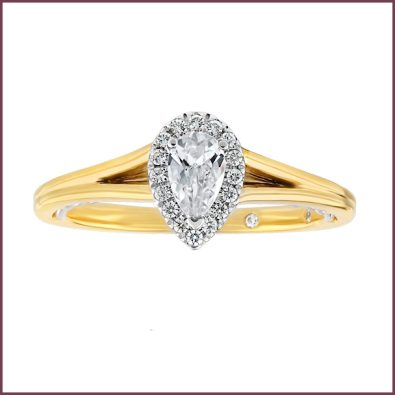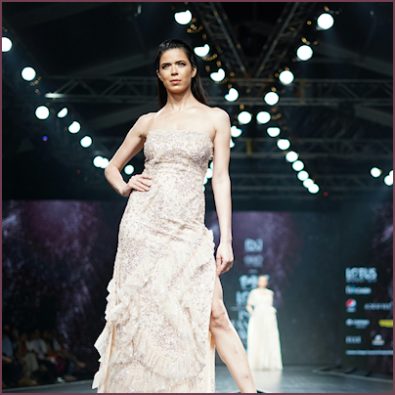All in the Details
Engagement and wedding ring trends tend to evolve slowly over time. Styles don’t change that dramatically and the main reason for that is because these iconic pieces are worn day in and day out for years to come.
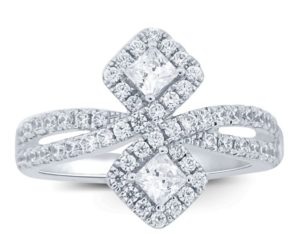 “Women say they want new, new, new, but in reality most brides gravitate to the classic styles because it really needs to last a lifetime,” describes Michael O’Connor, stylist to the stars and contributor to Engagement 101. “My research on the bridal market shows that people perceive differences in minutiae—a four prong versus six prong head; knife-edge band or smooth, 98 points versus 1.05 carats. Tiny things amount to big differences.”
“Women say they want new, new, new, but in reality most brides gravitate to the classic styles because it really needs to last a lifetime,” describes Michael O’Connor, stylist to the stars and contributor to Engagement 101. “My research on the bridal market shows that people perceive differences in minutiae—a four prong versus six prong head; knife-edge band or smooth, 98 points versus 1.05 carats. Tiny things amount to big differences.”
Trends continue for big diamond looks, and even though jewelers are tired of halos and composite heads, they provide big bang for the buck and that turns sales. While design styles may not change that drastically, there is more interest in fancy shapes as center stones, and mixed in settings and on bands. Color also continues to intrigue, from small accent gems to color side and center stones, even use of different colors in metals, with rose gold more important.
Big Diamond Look
The biggest trend from Hollywood is a big diamond look, says O’Connor. “Every time you see a celebrity get engaged you see a big diamond and consumers want to emulate that, which is why trends remain so strong for halo and composite styles. Consumers want a bolder diamond profile that’s affordable.”
As long as the engagement ring or wedding band or bridal set is showing diamonds, that’s what customers want, says Renato Cruz, VP of Product Development, Sumit Diamond/Laxmi, New York. “Show me the diamonds! Classic bridal, classic with a twist, and vintage are still hot in all metal colors.”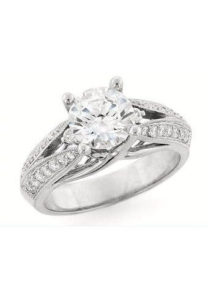
Halos remain one of the most popular trends out there, manifested in many ways from a simple row of round diamonds around a round diamond center to a double halo, and now alternative halos mixing different shapes like a round center with cushion halo, says Rebecca Foerster, executive vice president, strategic planning and marketing for Leo Schachter Diamonds, LLC, New York. “We’re also seeing halos around side stones, injection of color with gemstones or different metals.”
Multi-stone settings continue to be a significant trend, says Neil Shah for Shah Luxury, New York. Launched a few years ago, Shah’s bridal brands with composite and halo settings, Carizza and Promezza are hitting critical mass with beautiful mountings that present a big diamond look for less. He sees branding a key part of telling the value added story.
Foerster cites a shift back to the solitaire and in a larger stone, 1 carat +, which she sees as positive for the industry that has suffered an erosion of price. Jeffrey Cohen, vice-president of sales, KGS Jewels, New York notes that the major accounts are asking for more center stone bridal, but halos and composite styles remain the bread and butter of the business.
For Cohen, the other big story is in two-stone diamond rings. “Two-stone was very big part of our business in 2016, and we expect that to continue. It’s an iconic concept in design and story. The majors came out with it in a big way and it has had an umbrella effect. It really has become a staple.”
Different Shapes & Colors
Shapes and color undoubtedly can add personality to a classic piece. Foerster sees enormous opportunities for consumers to personalize a design with fancy diamond shapes. From her perspective, princess is No. 1, cushion No. 2, and there is more demand for emerald, radiant and marquise shapes.
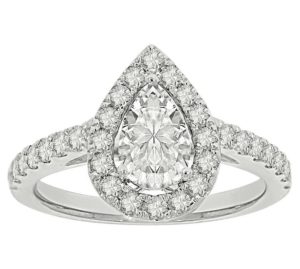 Designer Phyllis Bergman with Mercury Rings, division of Interjewel Group, New York also cites ovals coming into play, as well as pear shapes, and a greater use of baguettes in narrow profiles.
Designer Phyllis Bergman with Mercury Rings, division of Interjewel Group, New York also cites ovals coming into play, as well as pear shapes, and a greater use of baguettes in narrow profiles.
Millennials also are looking to color stones to customize a piece, says O’Connor, not only because they’re unique and different, but also because they have emotional value and symbolism. “We’re seeing young successful women wearing color like Elizabeth Hurley, Kate Middleton, and Jessica Simpson. While it’s not a dominant trend, more consumers are considering gems in their bridal design.”
Sapphires, in blue and pink hues are most popular, says Foerster, as well as birthstones like aquamarine, garnet and topaz. Bergman also cites more interest in morganite (a popular gem set in rose gold, a favorite).
Banded About
When it comes to wedding rings, the band business is booming. Inspiring greater sales are a number of factors from the stacking trend, to same sex couples choosing bands for both engagement and wedding rings, and also a shift in attitude that bands serve as fashion statements.
“We’re seeing single bands as a trend, wider bands worn separately on the other hand,” says Foerster, who notes that consumers are exploring new ways of styling their wedding rings. Bergman also cites a trend for slender platinum and diamond bands, and more mixing of diamond shapes in the setting.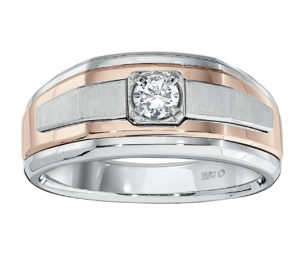
Diamonds and gold are resonating with men, says Jonathan Goodman Cohen, for the men’s jewelry manufacturer IB Goodman, Newport, Kentucky. Sales are up in gold and diamond bands. “We’re doing a robust business in men’s gold and diamond rings, usually five stones in .50 carat total weight and larger. Mixed gold colors are especially popular like yellow and white or rose and white.”
